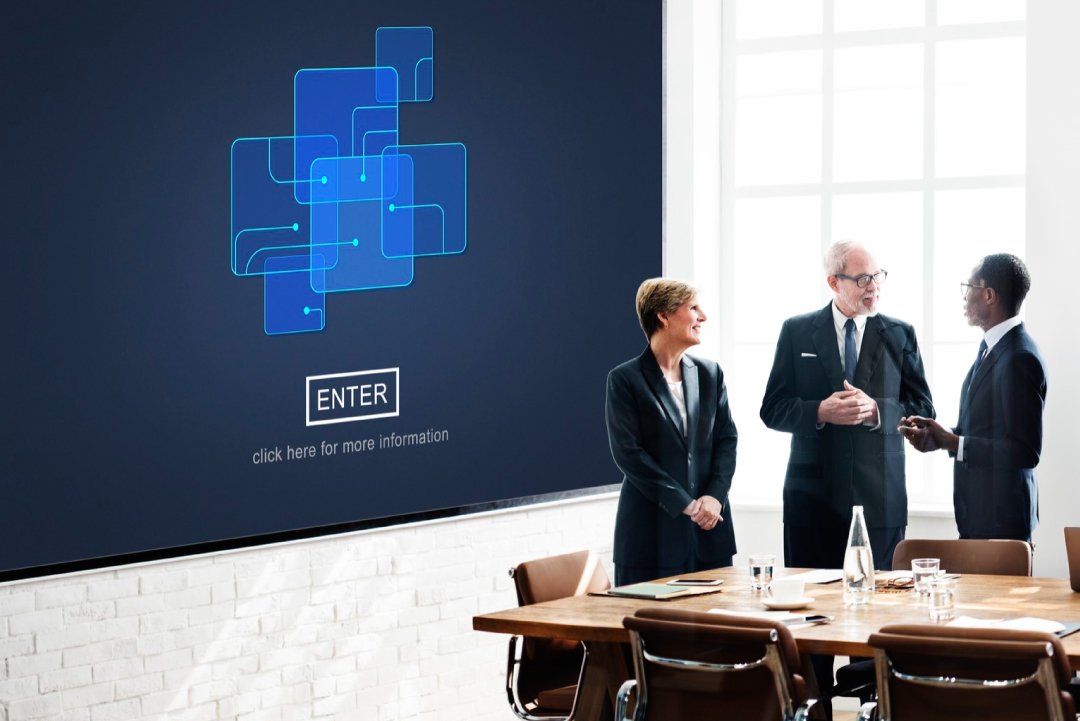- Introduction
- Understanding Microsoft Copilot’s Architecture and Data Model
- How Microsoft Copilot Protects Organizational Data
- Role-Based Access Control (RBAC): Keeping Information in the Right Hands
- Built-In Microsoft 365 Compliance Capabilities
- Governance Best Practices for IT Leaders
- Balancing Innovation with Regulatory Compliance
- Safe Deployment Strategies
- The Strategic Advantage of Secure AI Adoption
- Final Thoughts
- FAQs
- About Softvil
Introduction
As artificial intelligence becomes integral to modern enterprise systems, security and compliance concerns are top of mind for technology leaders. Chief Technology Officers (CTOs), Chief Information Officers (CIOs), and IT managers are increasingly being asked to balance innovation with risk management. Microsoft Copilot—the AI assistant integrated within Microsoft 365—represents a major step forward in workplace automation. But it also raises important questions: How is organizational data protected? How does it align with compliance frameworks like GDPR or HIPAA?
This article explores how Microsoft Copilot 365 manages data security, enforces role-based access, and supports regulatory compliance while enabling innovation. We’ll also discuss governance best practices and safe deployment strategies for IT leaders aiming to maximize Microsoft Copilot benefits without compromising control.
Understanding Microsoft Copilot’s Architecture and Data Model

Before diving into governance and compliance, it’s essential to understand how Copilot for Microsoft 365 works under the hood.
Microsoft Copilot integrates advanced large language models (LLMs) with Microsoft Graph—the secure data fabric that connects documents, emails, meetings, chats, and applications across Microsoft 365. When a user issues a command such as “Summarize yesterday’s meeting notes” or “Draft a project plan from recent discussions,” Microsoft Copilot features use contextual signals from Microsoft Graph to generate responses based on the user’s data and permissions.
Importantly, this data never leaves the organization’s Microsoft 365 tenant. Microsoft Copilot 365 operates within the secure boundary of Microsoft’s cloud infrastructure, inheriting all enterprise-grade controls, encryption, and compliance mechanisms already in place for Microsoft 365.
How Microsoft Copilot Protects Organizational Data

Data Segregation and Tenant Isolation
Every organization’s data is contained within its own Microsoft 365 tenant, ensuring strict segregation between companies. Microsoft Copilot does not mix or share data across tenants. This design prevents cross-organizational exposure—a critical reassurance for industries like healthcare, finance, and government.
Encryption in Transit and at Rest
All data processed by Microsoft Copilot 365 is encrypted using AES-256 standards, both in transit and at rest. Communications between user devices, Microsoft’s servers, and the AI models are protected through TLS (Transport Layer Security), ensuring end-to-end security.
No Training on Customer Data
One of the most significant Microsoft Copilot benefits from a compliance standpoint is that your data is not used to train the underlying AI models. Unlike some consumer-grade AI systems, Copilot for Microsoft 365 leverages your data only for real-time contextual processing—never for model improvement or external use.
Adherence to Microsoft’s Responsible AI Principles
Microsoft Copilot was developed in alignment with Microsoft’s Responsible AI Standard, which emphasizes transparency, fairness, reliability, privacy, and accountability. These principles ensure that AI-driven operations meet ethical and regulatory expectations for enterprise use.
Role-Based Access Control (RBAC): Keeping Information in the Right Hands

One of the most common misconceptions about AI assistants is that they might expose data beyond a user’s authorization. Microsoft Copilot 365 eliminates that risk by strictly adhering to existing role-based access controls (RBAC) within Microsoft 365.
If a user doesn’t have permission to open a document or view an email, Microsoft Copilot cannot access or summarize that content. The AI respects Microsoft Graph’s security trimming—meaning it “sees” only what the user can legitimately see.
Practical Example
Suppose a marketing manager asks Copilot for Microsoft 365 to “summarize the latest Q4 financial report.” If that file resides in a restricted finance folder, Copilot will respond with a compliance-safe message such as, “You don’t have access to that file,” rather than exposing unauthorized data.
This security-by-design approach ensures that Microsoft Copilot features support compliance requirements like least-privilege access and data minimization—key pillars of regulations such as GDPR.
Built-In Microsoft 365 Compliance Capabilities

Copilot for Microsoft 365 inherits the robust compliance and security framework that Microsoft 365 is known for. IT leaders can leverage existing tools and policies to maintain governance.
Microsoft Purview Integration
Microsoft Purview offers a unified data governance and compliance platform. It enables organizations to apply data loss prevention (DLP) policies, sensitivity labels, and information barriers to the data that Microsoft Copilot can access. This ensures confidential data stays protected, even when being processed by AI.
Audit Logging and Reporting
All interactions with Microsoft Copilot 365 are logged, providing full traceability. IT administrators can monitor usage patterns, detect anomalies, and conduct forensic reviews if needed. This audit capability supports compliance with internal governance frameworks and external audits.
eDiscovery and Legal Hold
Because Microsoft Copilot features operate within Microsoft 365, all generated content—such as AI-assisted documents or meeting summaries—is subject to the same eDiscovery and legal hold policies as any other corporate data. This continuity simplifies legal compliance.
Compliance Certifications
Microsoft’s cloud infrastructure meets over 100 global and regional compliance standards, including ISO 27001, SOC 1–3, GDPR, HIPAA, and FedRAMP. By extension, Microsoft Copilot benefits from these certifications, giving IT leaders confidence in its security posture.
Governance Best Practices for IT Leaders

Deploying Microsoft Copilot 365 requires a well-defined governance strategy that balances innovation with control. Below are best practices to ensure secure and compliant adoption.
Establish Clear Data Access Policies
Review and reinforce Microsoft 365 permissions before enabling Copilot for Microsoft 365. Ensure sensitive repositories—like HR records, financial data, or legal documents—are accessible only to appropriate roles.
Apply Sensitivity Labels and DLP Rules
Use Microsoft Purview to assign sensitivity labels to documents and enforce DLP policies that prevent Microsoft Copilot from accessing or sharing restricted data inadvertently.
Pilot Before Full Deployment
Start with a limited rollout to a select group of users. This pilot phase allows IT teams to test how Microsoft Copilot features interact with existing security configurations, adjust policies, and gather feedback.
Train Users on Responsible AI Use
Employees should understand what Microsoft Copilot 365 can and cannot do. Provide guidance on prompt phrasing, data privacy expectations, and how to verify AI-generated outputs.
Monitor and Audit Regularly
Use built-in audit logs to monitor user activity, detect irregular behavior, and refine governance settings. Continuous monitoring helps sustain compliance across evolving workloads.
Balancing Innovation with Regulatory Compliance

IT leaders often face the challenge of enabling cutting-edge tools while maintaining strict adherence to regulations such as GDPR and HIPAA. Fortunately, Microsoft Copilot benefits include built-in alignment with these frameworks.
GDPR (General Data Protection Regulation)
Under GDPR, organizations must ensure lawful processing, transparency, and data subject rights. Microsoft Copilot 365 complies by:
- Processing data within the customer’s Microsoft 365 tenant.
- Allowing administrators to define retention and deletion policies.
- Ensuring AI outputs adhere to access permissions, minimizing exposure risk.
HIPAA (Health Insurance Portability and Accountability Act)
For healthcare organizations, Copilot for Microsoft 365 operates under the same HIPAA Business Associate Agreement (BAA) as other Microsoft 365 services. This means all AI-driven operations comply with safeguards for protected health information (PHI), including encryption and access control.
By embedding AI within the compliant Microsoft 365 ecosystem, IT leaders can accelerate innovation while remaining fully aligned with regulatory mandates.
Safe Deployment Strategies

When introducing Microsoft Copilot 365, IT leaders should follow a structured rollout plan:
- Assess Readiness – Evaluate your current Microsoft 365 security baseline and identify gaps in access control or compliance coverage.
- Define Use Cases – Prioritize areas where Microsoft Copilot benefits will have the most immediate impact, such as document drafting, meeting summaries, or data analysis.
- Implement Governance Tools – Activate Microsoft Purview for data classification and tracking.
- Educate Employees – Train users on how Microsoft Copilot features function within compliance boundaries.
- Measure and Iterate – Use audit logs and feedback to continuously improve policies and usage patterns.
This proactive approach ensures AI deployment aligns with corporate governance standards and regulatory requirements.
The Strategic Advantage of Secure AI Adoption

By adopting Copilot for Microsoft 365, organizations gain more than productivity—they gain a secure, compliant foundation for AI-driven innovation. The platform’s combination of transparency, control, and contextual intelligence empowers IT leaders to advance digital transformation responsibly.
Microsoft Copilot does not bypass enterprise safeguards—it reinforces them. With encryption, tenant isolation, and built-in compliance, it allows organizations to embrace AI confidently while maintaining data integrity and trust.
Final Thoughts
For today’s CTOs, CIOs, and IT managers, the question is no longer whether to use AI, but how to deploy it securely. Microsoft Copilot 365 provides a framework that blends innovation with compliance, enabling organizations to modernize without compromising governance.
By understanding Microsoft Copilot features, enforcing role-based access, and leveraging existing Microsoft 365 compliance tools, IT leaders can maximize Microsoft Copilot benefits safely. The future of enterprise AI lies not only in smarter technology but in secure, compliant implementation—and Copilot for Microsoft 365 delivers exactly that.
FAQs
Yes. Microsoft Copilot operates within your organization’s Microsoft 365 tenant, ensuring data encryption, access control, and compliance with enterprise-grade security standards.
No. Microsoft Copilot 365 does not use your organization’s data to train or retrain large language models. Your data remains private and securely contained within your tenant.
Copilot for Microsoft 365 aligns with Microsoft’s global compliance framework, supporting GDPR, HIPAA, and other regulatory standards through encryption, data residency, and access control.
Yes. All user interactions with Microsoft Copilot are recorded in audit logs, allowing administrators to review, track, and report activity for compliance and governance purposes.
Key Microsoft Copilot features include role-based access control, data loss prevention (DLP), encryption at rest and in transit, and integration with Microsoft Purview for governance.
About Softvil
Softvil is a leading software development company dedicated to delivering innovative digital solutions that help businesses thrive in the modern era. Specializing in custom software, IT consulting, and managed services, Softvil combines cutting-edge technology with agile methodologies to create scalable, high-performance applications. With a focus on quality, collaboration, and customer success, Softvil empowers organizations to enhance productivity, drive growth, and accelerate digital transformation.

